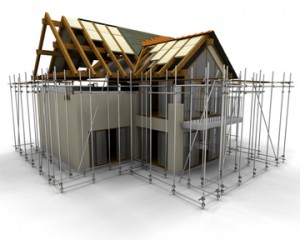There was a very interesting artilce in the New York Times on August 21 bu Michael Kimmelman: In Redesigned Room, Hospital Patients May Feel Better Already. The article focuses on a move by the University Medical Center of Princeton to redesign hospital rooms. And Kimmelman discusses a variety of issues associated with hospital design. And there were …
With the recent popularity of “green” buildings, we have to wonder how these new materials affect the microbes in the built environment. This 2010 paper from researchers at the University of Texas examines fungal growth in such materials. The study involved artificially and naturally inoculating four green building materials and their non-green counterparts with Aspergillus niger, as well as …
Quick post here on a hospital water sampling study in Italy that found much higher levels of potentially pathogenic bacteria (e.g. Legionella) in aerators than in the rest of the plumbing system. Reading this gives a really good sense of how complicated it is to maintain a sufficiently sterile water distribution system for immunocompromised patients …
We are all quite familiar with the age-old problem: many times, the diagnosis of the microbial agent responsible for an infection takes days. In the best of cases, a broad spectrum antibiotic is prescribed while doctors await lab results, which contributes to the growing problem of antibiotic resistance. In the worst cases, the patient does …
Quick post here. The Robert Wood Johnson Foundation has a podcast on “Pioneering Ideas” and it covers microbiomes of the built environment this week:1 RWJF Pioneering Ideas Podcast: Episode 5 | Conspiracy Theories, Microbiomes & More – Robert Wood Johnson Foundation. They also give a nice plug for microBEnet. From their site: Microbiomes and Design (26:25) — …
Many recent news stories have been discussing a case of an outbreak in a hospital in Greenville, SC that has apprently been traced to drinking water contamination. Thus this may be of interest to a variety of people. See some links below: 4th patient with GHS infection dies. Fourth bacterial infection death reported at South …
Just got this email letter from the American Society for Microbiology and I thought it would be useful and important to share. Please – everyone out there doing work involving potential harmful microbes – redouble your efforts to do that work as safely as possible. And also consider careful the risk – benefit balance for the …
The headline above is from an article that someone sent us a couple of months ago that I just got around to checking out. It refers to a paper entitled “Detection of the Urban Release of a Bacillus anthracis Simulant by Air Sampling” published in Biosecurity and Bioterrism which is a journal that I bet …
While not exactly the microbiology of the built environment, studies of the human microbiome are the next closest thing and and understanding of both will be critical to creating healthier living environments. The American Gut project is the largest, crowdfunded/citizen science human microbiome effort, with over 3,000 participants so far (including myself). In addition to …
Recently, a bit of an uproar occurred when the CDC reported that workers there had been accidentally exposed to the bacterium that causes anthrax. The lesson from this? Well, I think it is simple. Accidents happen. And they can happen anywhere to anyone. No matter how careful one is. A few days ago a friend …
